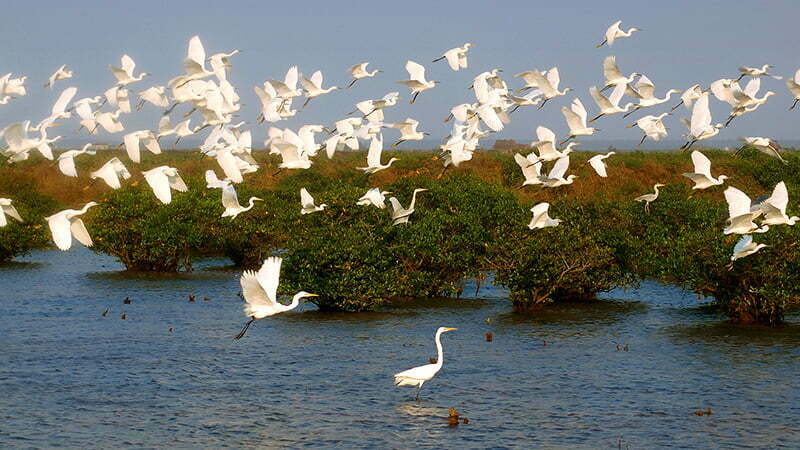For those who love travelling and discovering new thing especially natural sight, going trekking in a jungle or a forest has always been an interesting and challenging thing. Unlike other national parks located in areas of Vietnam, Xuan Thuy National Park in Nam Dinh Province is quite unique and amazing because the park was the first wetland area to be announced a Ramsar site in south-east Asia and is internationally significant as a migratory bird habitat. Thanks to the geological location together with the biodiversity of the environment there, Xuan Thuy park is such an unforgettable experience for people who want to explore the beauty of nature and species.
Being 160km far from Hanoi, Xuan Thuy National Park is located in Giao Thuy District, Nam Dinh Province in an area 12,000ha wide. To the local people nearby Xuan Thuy National Park, the best time to visit this site is from October to April, due to the fact that the number of birds migrating from the north increases, creating an exciting and noisy atmosphere. Also, if you want to enjoy the glamorous and colorful sights, you can travel there in summer time from April to September. There are several ways to reach Xuan Thuy: either go by bus, by train or rent private car and driver.
It could be said that Xuan Thuy park is extraordinary compared to other places on the planet because it allows us to see many creatures in their local living space, particularly birds. Researchers evaluate that there are more than 100 types of transient winged creatures which stop inside Xuan Thuy park to rest amid their relocation, for the most part in huge herds. Besides them, there are additionally 215 types of flying creatures living in its woodlands and mangrove overwhelms throughout the entire year, including a few rare species, for example, the Pelican, Spoon-charge Stork and Saunder’s Gull. Under the water of Xuan Thuy national park is a mysterious and natural surroundings of around 500 sorts of ocean animals like the Sea Cat, Sea Fox, and numerous brilliant types of crab, shrimp and fish. What’s more, this stop contains gigantic quantities of restorative and consumable plants, including uncommon sorts of green growth and kelp. The excellent biodiversity of Xuan Thuy combined with its flawless scenes make for stunning perspectives; the kind normally just observed through the viewpoint of a nature narrative.
Xuan Thuy National Park, thanks to the Eco-biodiversity and the cool climate, has appealed numerous people coming to visit and explore the wonderful nature. If you want to discover this park, it would be better to ask for assistance from the park staff who get used to living in the park for years and who are able to recognize as well as show you those particular bird species. Particularly, you can take the hiking routes or boating routes to the sites of interest. It means that you can travel on foot to some places of interest; or you can only be reached by boat at high tide. For the hiking trip, you can go trekking through the natural and artificial habitats along the embankment system in Con Ngan Island, where the recreation center base camp is found. Particularly, in the high tide time, you can discover various feathered creature perching in the shrimp lakes, including Black-faced Spoonbill, gulls, ducks and waders. Then, for the boating voyages, especially in the high tide time, you can rent a boat to come to the seaward mudflats and sandy pads, where Spoon-billed Sandpiper can be found among extensive groups of waders. An elective boat course includes going by Con Xanh island, which underpins some Casuarina woods, which is exceptionally appropriate for the relocating non-waterbirds. In the island, you can discover the pittas and different passerines amid relocating season. Another way, you can take pontoon to the seaward mudflats and sandy pads zones of Giao Xuan Commune, where is the best region for viewing the shorebirds. In this site, you can discover enormous groups of waders and particularly Spoon-charged Sandpiper, Nordmann’s Greenshank, numerous types of gulls including Saunders’ Gull, duck species and at some point Black-faced Spoonbill and Black-headed Ibis.




